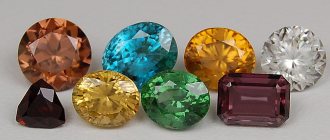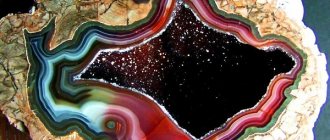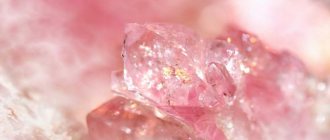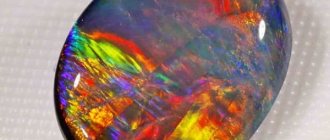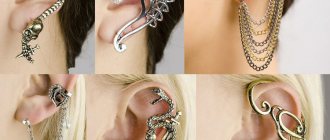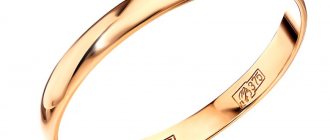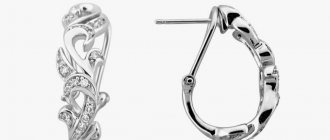Nanostallic is a synthetic mineral that has more or less pronounced transparency and a wide range of shades. It is created by crystallizing the most ordinary glass, prepared with the addition of the necessary chemicals. The result is a material with very high performance characteristics. For those who are interested in Nanoall, as well as those who want to find out what kind of stone it is, the article below will provide comprehensive answers.
What is Nanoall
The material in question is classified as glass-crystalline. Today it is used in a wide variety of industries. By the way, only one company in the whole world is engaged in the production of nanometal, and it is Russian. It was the RusGems employees who were able to bring the production technology to perfection, which made it possible to obtain very high-quality and practical material.
The basis of synthetic stone is the oxides SiO₂, as well as Al₂O₃. Then, other ingredients are added to this pair, which is part of literally any precious mineral, to ensure that the final product meets the specified parameters. What is important is that the synthesized stone always has ideal optical characteristics, which natural minerals often cannot boast of.
Synthetic crystals
In Russia, this is the customary name for all minerals synthesized by man, but jewelers in most other countries include in this group only minerals that have a composition and properties similar to natural ones: diamond, emerald, alexandrite, ruby, sapphire, spinel, amethyst, citrine, smoky quartz, etc. For their synthesis, such widely used methods as hydrothermal, flux, Verneuil, Czochralski, Bagdasarov, etc. are used. Some of these technologies are quite expensive, but guarantee the production of high quality crystals. The market price of synthesized diamonds, hydrothermal emeralds, and alexandrites grown by the Czochralski method, even with a high production cost, will still be significantly lower than their natural counterparts.
Another group of synthetic jewelry stones - cubic zirconia, yttrium-aluminum and gallium-gadolinium garnets - has no analogues in nature. They sometimes imitate some natural stones in color, although their chemical composition and physical properties differ. Stones of this group are usually called imitations. For example, colorless cubic zirconia is the most popular and affordable imitation diamond.
First grown in the 1970s in the USSR, today it is produced in industrial quantities mainly in the USA and China. One of the divisions of the Formica Group of Companies has been successfully growing raw materials for more than 15 years and cutting cubic zirconia in special colors: emerald green, sapphire, brown, with the “Alexandrite” effect, etc. Over the years of successful work with cubic zirconia, our specialists have discovered not only the advantages of this mineral, but also its disadvantages. The main one is uneven coloring. This feature is explained by the fact that the concentration of dye elements in the melt and in the crystal grown from it is not always the same (the ratio of these concentrations in some cases is less than unity, and in others more), therefore, as the crystals grow, the color saturation can either increase or increase. and decrease depending on the specific color and dye element. Another limitation for the use of some colored cubic zirconia is the impossibility of using them for setting in wax and in stone casting technology. Cubic zirconias of green, blue, blue, black shades easily change color after thermal shock in an aggressive oxidizing environment.
The high density, hardness and magnificent shine of cubic zirconia (at a very low cost) make them indispensable for simulating diamonds: colorless, brown, pink, yellow, blue. But these same advantages turn into disadvantages when trying to imitate gems such as emerald, sapphire, amethyst, tanzanite, and peridot.
Colored glass and crystal
Glass and crystal (rhinestones, chatons, beads, etc.) are used primarily in costume jewelry and extremely rarely in jewelry. Their cost is lower, they are uniformly colored, have a low refractive index, density, hardness, low shine and are not suitable for casting with stones.
Sitals, or Nanocrystalline materials
These products consist of an amorphous matrix and nanosized (7-10 mm) crystals grown from it and uniformly distributed throughout the entire volume. Their composition and structure can be very diverse. Combining all the best features and properties of glasses and crystals, sitals are successfully used in the production of optics, electronics and household appliances. A natural analogue of sitals can be obsidian, an effusive volcanic rock consisting of aluminosilicate glass and tiny seed crystals (crystallites) and microlites. This exceptional material interested Formica specialists back in 1993. The first samples of emerald green sital were grown in the laboratory of one of the Moscow research institutes, but it took many years before nanocrystalline materials were put into production. Today, Formica is the only company in the world that has developed and produces on an industrial scale this completely new synthetic material for the jewelry industry. The company holds a patent for the use of colored sitals in the jewelry industry and produces products under the following patented names: “Nanocrystal”, “Nanocrystal”, “Nanogem” and “Formica nanogem”. The product line is represented by spinel, sapphirine, rutile, garnet, quartz and other minerals (depending on color), and the amorphous matrix containing them consists of high-temperature aluminosilicate glass.
Nanocrystals have completely unique physical and optical properties:
- hardness 7-7.5;
- refractive index 1.61-1.64;
- density 3-3.3 g/cm3;
- melting point 1650-1750 C;
- color and shine – as close as possible to the main natural gems;
- transparency – transparent, translucent and opaque;
- coloring – uniform and homogeneous;
- Suitability for casting with stones is ideal.
-
Currently, Formica produces transparent, translucent and opaque types of nanocrystals that almost perfectly imitate the color, brilliance, hardness and density of such gems as emerald, sapphire, spinel, topaz, peridot, citrine, garnet, rose and smoky quartz, black spinel, turquoise and other minerals. In the presented photographs of faceted colored nanocrystals, the identity of their color with natural gems is noticeable. The similarity of the emerald green nanocrystal with natural analogues is especially surprising: they are indistinguishable in color, gloss, refractive index and are very similar in density and hardness. Considering its very affordable price, this nanoemerald can confidently be called a worthy alternative to hydrothermal emerald, as well as green cubic zirconia, yttrium-aluminum and gallium-gadolinium garnets.
Sapphire blue nanocrystal is noticeably different from natural sapphires in density, refractive index and hardness, but identical in color and luster. Our nanosapphire successfully competes in price with synthetic corundum and is in great demand in the size range from 0.8 to 15 mm. Chrysolite, citrine, pink, gray, all types of topaz and other transparent nanocrystals are very close to their natural counterparts both in color and physical properties. They imitate corresponding natural semi-precious stones much better than cubic zirconia, hydrothermal or flux crystals and are suitable for stone casting technology.
We produce emerald green, sapphire blue and some other nanocrystal colors in very dark, dark, medium and light versions. Dark varieties are used for small-sized stones, and lighter varieties are used for large cuts. This allows for the same saturation in stones of different sizes, which is extremely important for jewelry manufacturers. Along with the most popular transparent nanocrystals, Formica produces black, turquoise, milky white, beige, honey and other translucent (opal) and opaque types.
Currently, we have limited the sale of nanocrystals in raw materials and offer European machine-cut, Chinese machine-cut and hand-cut products of high quality. The advantage of colored nanocrystals over synthetic crystals, glasses and other alternative materials is so obvious that, despite the global economic crisis in the jewelry industry, all of our products are sold in large volumes in Thailand, China, India, Europe, the USA, Russia and the CIS countries. The introduction of Nanogem turned out to be so popular that this year, during the Hong Kong Jewelery & Gem Fair in September, we reached the finals of a competition organized by Jewelry News Asia magazine and received an award for the best innovation in the “Production and Technology” category. This victory is yet another confirmation of the recognition of nanocrystals by jewelers around the world as a worthy imitation of natural gems!
Karen Avakyan, Candidate of Geological and Mineralogical Sciences (Formica Group of Companies).
ACCORDING TO AN ARTICLE PUBLISHED IN THE JEWELRY REVIEW MAGAZINE
How Nanoall was created
Ceramic glass has come a long way before becoming a material for jewelry. The first heat-resistant and super-strong glass was obtained by the famous scientist R. Reaumur back in 1739. At that time, he was already a member of the St. Petersburg and Paris Academies, but, nevertheless, his invention did not initially attract much attention. The problem was that the new glass was opaque and more like ceramic.
As a result, the development was forgotten for almost two centuries, until the need to create a new material arose among the Americans. Really strong crystallized glass was soon produced all over the world. In each country it received its own name, but it was called glass-ceramic by the Soviet physicist I. Kitaigorodsky.
Garnet in astrology and its magical properties
Red pyropes and almandines are suitable for “fiery” people - Leo, Sagittarius, Aries, as well as those with a pronounced Mars in their personal birth horoscope, for example Scorpios. Green stones will be especially useful for Libra and Aquarius. Garnet is also an excellent companion for people born under the sign of Capricorn.
People believed that different colored garnets had different effects. Pyropes and almandines, due to their red color, have been considered talismans of love since ancient times. They believe that they give inspiration to creative people and help them achieve victories. Green stones are a talisman for businessmen: they attract wealth and help in their endeavors. The main property of all garnets is their ability to open new horizons, charge a person with energy and strength and help not to be afraid of their desires.
Jewelry glass ceramics
Nanoall began to be used in jewelry only in the 21st century. Initially, that is, in the 70s of the last century, the material was used for inexpensive but strong facing tiles. Since the composition included waste from the metallurgical industry, it was not particularly beautiful, but since it was intended for industrial enterprises, this was not required. In addition to gray-black products, in the early 80s they mastered the production of beige varieties.
Only in the current century was it possible to give glass ceramic the necessary transparency and other acceptable decorative properties, which ensured the popularity of synthetic crystals. Now they decorate a variety of products:
• necklace; • brooches; • rings; • bracelets; • hairpins; • pendants; • earrings.
WHAT ARE SUCH STONES NEEDED FOR?
The need to create artificial stones is determined by a number of reasons:
- Jewelry with natural stones is expensive: jewelry with hydrothermal emeralds is just as beautiful, but costs 70 times more.
- The processes of prospecting and mining of precious gems are labor-intensive and resource-intensive, while creating artificial stones in the laboratory is much simpler and cheaper.
- Natural resources are being depleted, and it is becoming more difficult to find deposits with new reserves of minerals.
- Artificially grown stones are used by jewelers of world fashion houses.
Magical and healing properties
Theoretically, artificially grown emerald crystals should have similar magical properties as natural ones. After all, a man-made mineral is created from similar components under the influence of similar processes.
Nano-emeralds are used for the same magical rituals as natural ones: for example, they disinfect water by placing the mineral in the liquid for 24 hours.
Medicinal qualities
These stones are also used for medicinal purposes.
For people
It is useful to have green gem jewelry:
- people suffering from heart disease,
- people susceptible to stress and respiratory problems.
For indoors
It is believed that if you store a green gem in your home, you can:
- protect yourself from bad energy;
- gain family well-being;
- get rid of attacks of anger;
- fill the house with love.
Green gems look good when set in rhodium-plated silver, platinum or white gold.
The frame emphasizes the beauty of emeralds, and the metal enhances the effect of the stone.
Can it be used as talismans?
Even an artificially grown gem has a certain energy.
Hydrothermal emeralds are used in the manufacture of talismans for the same reason as natural minerals: because raw materials from natural emeralds are used to create artificial gems.
We recommend: PRENIT - the modest charm of solar jade
Talismans made from green minerals help the owner in the following matters:
- will protect from damage with the evil eye;
- sailors will be protected from storms and storms;
- will organize your thoughts and calm you down.
Who is suitable according to Horoscope
The energy of crystals is not suitable for all zodiac signs:
- wearing hydrothermal jewelry is not recommended for SCORPIO;
- ARIES ensure success in business;
- TAURUS strengthens memory;
- GEMINI discover talents;
- CANCER and LIBRA help to find peace of mind;
- LIONS increase vital energy;
- CAPRICORN and SAGITTARIUS are relieved of mental anxieties, but these signs should not abuse the mineral;
- for PISCES and AQUARIUS it is a strong talisman that brings happiness and success.
Existing colors
The first sitalls, as noted above, could not boast of either beauty or richness of shades. The oxides of some metals used initially gave a brown-green color. Only later was it possible to obtain first a milk sample, and then others. Today it is not difficult to find copies:
• purple; • blue; • green; • pink; • dark red; • brown; • purple, etc.
WHO IS THE AMULET SUITABLE FOR?
Another good news. Artificial glass-ceramic stone suits everyone. The gem carries neither positive nor negative energy. Will complement the image of purposeful Aries and sensible Virgos.
No matter what star or zodiac sign you were born under, feel free to choose and wear jewelry with crystals. And you will be irresistible!
Related publications
- How to distinguish SAPPHIRE from a FAKE
- HOW TO MAKE AMBER
- Defining NATURAL EMERALD
- FIANIT - laser part and “poor man’s diamond”
Features of nano sapphires and nano emeralds
Features of nano emeralds:
- A synthetic emerald weighs much less than a real one. Also, the degree of light refraction is significantly lower.
- These minerals are grown using a hydrothermal process, so when exposed to ultraviolet light they emit a red, luminescent color.
- Synthetic crystals contain feathery inclusions, unlike such elements grown by nature.
- When synthetic stone is processed, it may develop a mirror-like crack that has an irregular shape.
- By using lubrication, the transparency of nano sapphire can be increased.
Features of nano sapphires:
- A softer stone compared to its real counterpart. If you run a stone with a hardness of 8.5 on the Moss scale over the surface of nano sapphire, traces of scratches will remain.
- Do not have any cracks. If there are air bubbles, they have a spherical shape.
- A series of curved stripes with different shades are visible.
- Uneven color and has many different shades.
Diffusion and declassed sapphire
Diffusion is a chemical and physical process of penetration of molecules of a substance into the molecules of another substance. Diffusion is used as a method for refining precious stones, including for refining fancy types of sapphire.
Fancy sapphire - any type except blue.
In order to refine star sapphire, diffusion with beryllium salts is used. As a result of heating and creating high pressure, beryllium salts penetrate into it in such a way that they “impregnate” the stone through and through. The effect of asterism is noticeably enhanced.
Methods for diffusion refining of sapphires can be of two main types: “impregnation” of the outer layer of corundum, when the true color becomes invisible underneath it, and “internal” diffusion, when at high temperatures internal inclusions in corundum, such as titanium and chromium, dissolve and coloring occurs mineral.
In any case, the refinement of corundum by diffusion methods is legal, if after this the gem is not presented as natural, but it is honestly indicated that these manipulations were carried out with it. Otherwise, it will be misleading or deceiving the consumer.
Declassed should not be confused with diffusion or synthetic. This gem is natural, but of low quality. So, it is cloudy and/or opaque. Quality characteristics, of course, affect its price, although it may be more expensive than synthetic ones. The label usually says “decl,” which means “declassed.”
